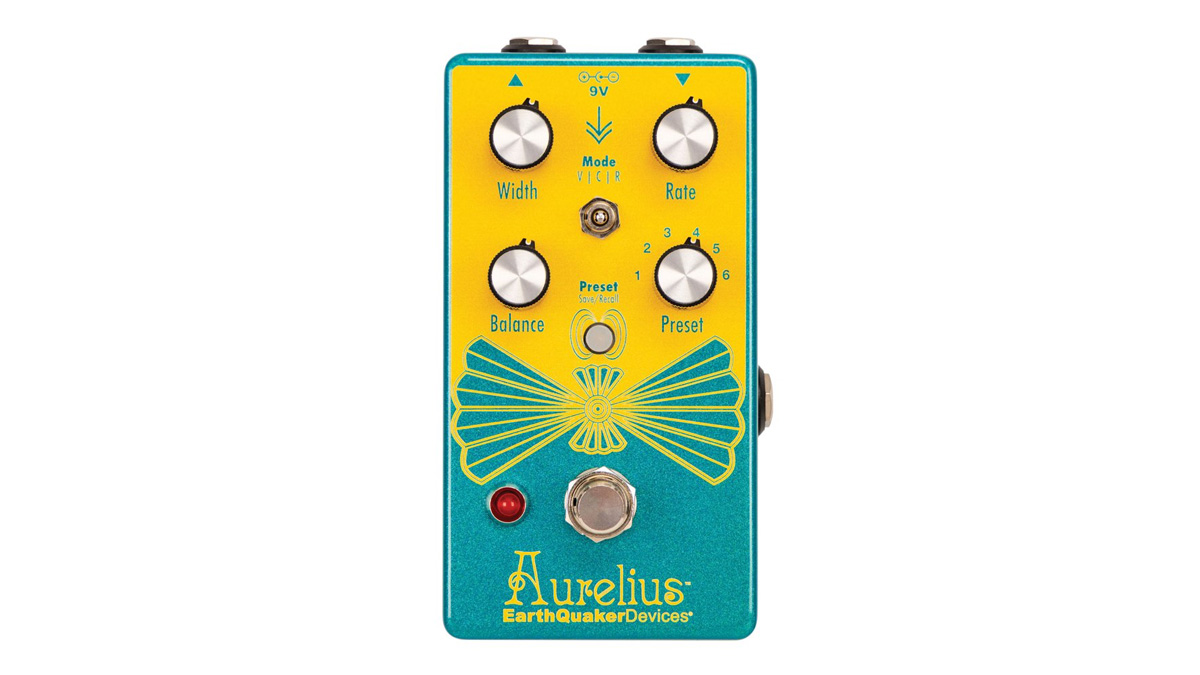NAMM 2023: EarthQuaker Devices offers vintage modulation and practical modern features with the Aurelius Tri-Chorus
Chorus, rotary and vibrato effects combined in one compact pedal that can store up to six user-programmable presets

NAMM 2023: EarthQuaker Devices has released the Aurelius Tri-Chorus, a compact stompbox inspired by a vintage Boss chorus pedal that offers players three modes of modulation to choose from, programmable presets, and the option of controlling it via expression pedal.
The Aurelius takes its cues from a ‘70s Boss CE-1 Chorus Ensemble and presents Vibrato, Chorus and Rotary Chorus models via a three-way toggle switch. Players have six slots to save their presets. Just select your mode, adjust Rate, Width and Balance controls to taste, and then simply save it all down via the Preset button in the middle of the pedal, and recall the preset via a six-way rotary dial. Easy.
The Aurelius also promises to be very versatile. The project might have used the CE-1 as Magnetic North as far as its core chorus but some of its sounds take modulation way, way back – as in back to the 1940s and the Leslie rotating speaker cabinet for a doppler effect that combines amplitude and frequency modulation for a psych sound that only really came of age during the swinging ‘60s.

In this Rotary mode, the Width control controls both the amplitude of the LFO and the width of its pitch modulation. Turn it clockwise to bring out more of those trebly frequencies that would be shooting out of the upper horn, or dial it back to accentuate the woofer in the speaker. The Balance control functions as your wet/dry mix when in Rotary mode.
Mode C, aka Chorus Mode, is a blend of chorus and flanger, is warmer and slower than the vibrato. If you want the flanger qualities to be more pronounced, simply turn that Width dial past noon and watch it go. In this mode, Balance adjusts the level of the modulated signal, so turn it up for more extreme effects.
Finally, the Vibrato mode is a traditional chorus that uses a triangle LFO to skew the effect towards vibrato. Dial the Balance all the way back and you get a pitch vibrato. Otherwise it works as a wet/dry mix.
In all three modes, Rate controls the speed of the LFO. You also have options for controlling these parameters on the fly, with a TRS input on the right-hand side of the unit allowing you to control Rate, Width or Balance via your expression pedal’s rocker. This, allied to the presets, make this a really practical option for adding vintage modulation to your pedalboard. You can also use control voltage via that expression pedal input,
Want all the hottest music and gear news, reviews, deals, features and more, direct to your inbox? Sign up here.
The Aurelius Tri-Chorus has top-mounted jacks, is handmade in Akron, Ohio, and is priced £225 / $199. Nine of your best volts from a pedalboard power supply will get it going. For more details, head over to EarthQuaker Devices. For a better idea of how this all sounds in practice, check out the demo videos below.
Jonathan Horsley has been writing about guitars and guitar culture since 2005, playing them since 1990, and regularly contributes to MusicRadar, Total Guitar and Guitar World. He uses Jazz III nylon picks, 10s during the week, 9s at the weekend, and shamefully still struggles with rhythm figure one of Van Halen’s Panama.
